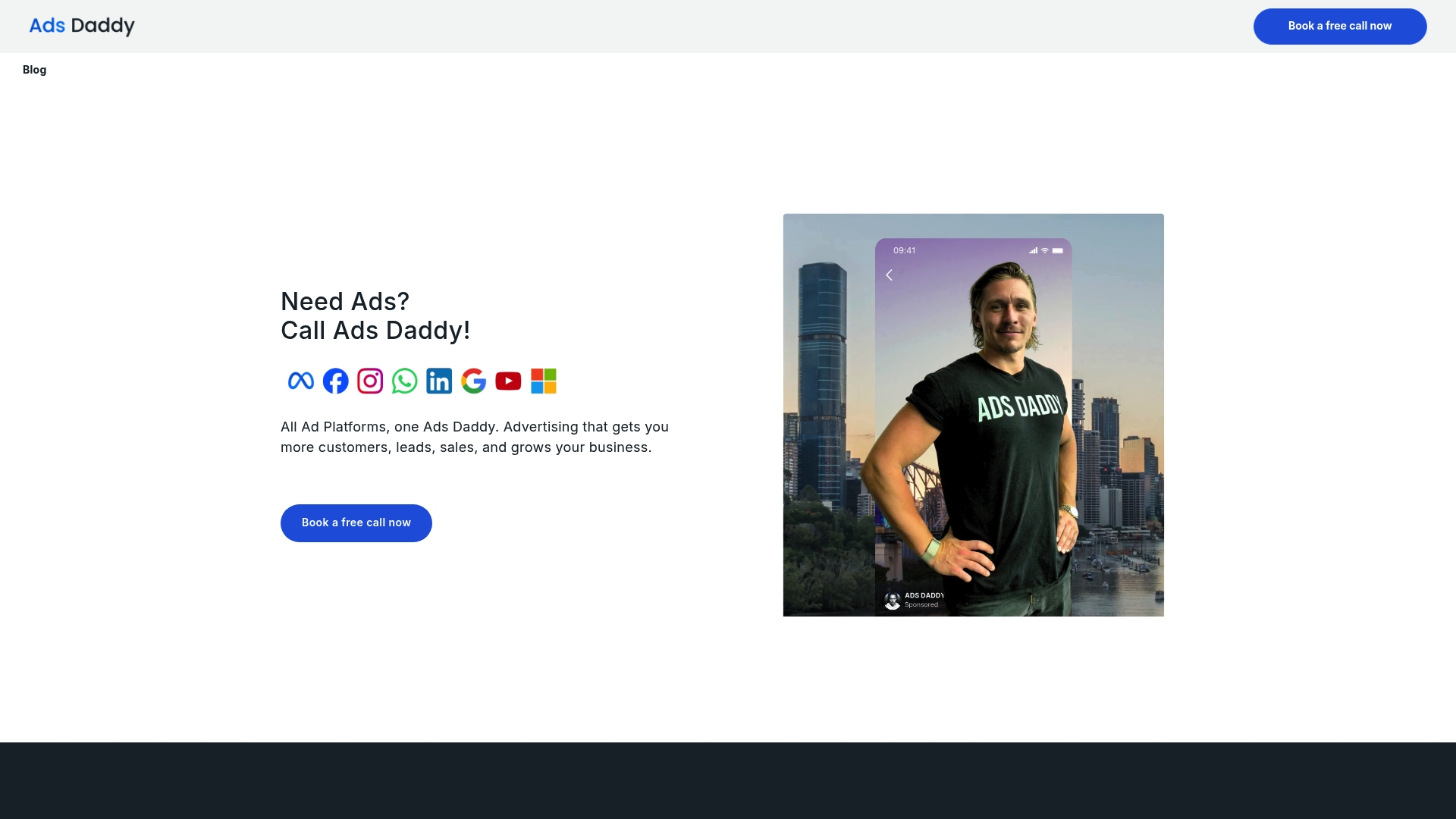Did you know that over 60 percent of ad spend fails to produce significant results because of poor optimization? The right approach to ad optimization determines whether your message catches attention or fades into the noise. Mastering the principles behind effective ad targeting, creative testing, and responsive adjustments gives you the power to turn every advertising dollar into measurable returns.
Key Takeaways
| Point | Details |
|---|---|
| Ad Optimization Principles | Focus on user satisfaction, revenue generation, and adaptive learning to enhance ad effectiveness. |
| Optimization Strategies | Employ audience targeting, creative refinement, and budget allocation techniques to improve campaign performance. |
| Platform-Specific Approaches | Tailor optimization efforts to the unique algorithms and metrics of each advertising platform for better results. |
| Critical Performance Metrics | Monitor key metrics like CTR, CPA, and ROAS to gauge advertising success and inform optimization decisions. |
Table of Contents
- Defining Ad Optimization And Core Principles
- Major Types Of Ad Optimization Strategies
- How Ad Optimization Works Across Platforms
- Key Metrics And Tools For Effective Optimization
- Common Pitfalls And How To Avoid Them
Defining Ad Optimization and Core Principles
Ad optimization is a strategic approach to refining digital advertising performance by systematically adjusting targeting, creative elements, and delivery mechanisms to maximize return on investment. At its core, ad optimization involves continuously analyzing and improving how advertisements are presented, ensuring they reach the most receptive audiences with the most compelling messaging.
According to research from computational advertising studies, the fundamental principles of ad optimization revolve around three critical dimensions: user satisfaction, revenue generation, and adaptive learning. As highlighted in academic research from the off-policy learning framework, successful ad optimization requires balancing user experience with commercial objectives. This means creating ads that are not just commercially effective but also contextually relevant and minimally intrusive to the user’s digital journey.
The psychological underpinnings of ad optimization are fascinating. Researchers have identified key behavioral mechanisms like mere exposure, hedonic adaptation, and operant conditioning that significantly influence how users interact with advertisements. By understanding these psychological triggers, advertisers can craft strategies that subtly guide user engagement without triggering resistance. This involves nuanced approaches such as:
- Carefully timing ad frequency to prevent user fatigue
- Personalizing ad content based on individual preferences
Effective ad optimization isn’t about bombarding users with messages, but about creating intelligent, responsive advertising ecosystems that adapt in real-time to user behavior and platform dynamics. Learn more about ad targeting strategies to complement these optimization principles and enhance your digital advertising approach.
Major Types of Ad Optimization Strategies
Digital advertising offers multiple strategic approaches to optimization, each targeting different aspects of campaign performance and audience engagement. Audience targeting optimization stands as the foundational strategy, focusing on precisely identifying and reaching the most relevant potential customers through detailed demographic, behavioral, and psychographic segmentation.
The second critical optimization strategy involves creative element refinement. This approach concentrates on systematically testing and improving ad creative components such as headlines, images, videos, and call-to-action messages. Marketers utilize techniques like A/B testing and multivariate testing to understand which creative variations generate the highest engagement and conversion rates across different audience segments.
Another sophisticated optimization strategy is bidding and budget allocation optimization. This advanced technique involves:
- Dynamically adjusting bid prices based on real-time performance signals
- Redistributing budget across top-performing channels and ad sets
- Implementing automated bidding strategies that leverage machine learning algorithms
- Minimizing cost per acquisition while maximizing overall campaign return on investment
To dive deeper into platform-specific optimization techniques, explore our Google Ads optimization insights that can help refine your digital advertising approach. Each optimization strategy requires continuous monitoring, data analysis, and agile adjustment to maintain peak advertising performance in an ever-changing digital landscape.

Here’s a comparison of the major ad optimization strategies:
![]()
| Strategy | Main Focus | Common Techniques | Key Benefit |
|---|---|---|---|
| Audience Targeting Optimisation | Identifying right customers | Demographic segmentation Psychographics |
Higher relevance |
| Creative Element Refinement | Enhancing ad visuals and messaging | A/B testing Multivariate testing |
Improved engagement |
| Bidding & Budget Allocation | Maximising spend efficiency | Automated bidding Real-time budget shifts |
Lower cost per result |
How Ad Optimization Works Across Platforms
Ad optimization operates through a sophisticated ecosystem of interconnected platforms, each with unique algorithms and targeting capabilities. Platform-specific optimization requires understanding the distinctive mechanics of major digital advertising channels like Google, Facebook, LinkedIn, and Instagram, recognizing that one-size-fits-all strategies simply do not work in today’s complex digital advertising landscape.
Each platform employs different machine learning algorithms to process ad performance data. Google Ads, for instance, uses complex predictive models that analyze historical performance, user intent, and real-time bidding signals to determine optimal ad placement and targeting. Facebook’s optimization algorithms focus heavily on user engagement metrics, prioritizing ads that generate meaningful interactions and demonstrate high relevance scores across diverse audience segments.
The optimization process typically involves multiple strategic components:
- Continuous performance monitoring
- Real-time data analysis
- Automated budget reallocation
- Granular audience segmentation
- Adaptive creative testing
For marketers seeking to navigate the intricate world of cross-platform advertising, explore our Facebook Ads optimization strategies to gain deeper insights into platform-specific techniques. Understanding these nuanced optimization approaches allows businesses to create more intelligent, responsive advertising campaigns that maximize return on investment across multiple digital channels.
Key Metrics and Tools for Effective Optimization
Successful ad optimization hinges on tracking and interpreting the right performance metrics that reveal the true effectiveness of digital advertising campaigns. These key metrics go beyond surface-level measurements, providing deep insights into audience engagement, conversion potential, and overall marketing efficiency.
The most critical metrics marketers must monitor include Click-Through Rate (CTR), Conversion Rate, Cost Per Acquisition (CPA), and Return on Ad Spend (ROAS). Each metric offers a unique perspective on campaign performance. CTR indicates how compelling your ad creative is, conversion rate reveals the actual effectiveness of your landing pages and offers, CPA measures the cost-efficiency of acquiring new customers, and ROAS demonstrates the direct revenue generated from advertising investments.
To effectively track and optimize these metrics, digital marketers leverage a range of sophisticated tools:
- Google Analytics for comprehensive performance tracking
- Facebook Ads Manager for platform-specific insights
- SEMrush for competitive analysis and keyword optimization
- Hotjar for user behavior and heat mapping
- Optimizely for A/B testing and conversion rate optimization
Learn how to optimize your marketing approach with our AI search optimization guide, which provides additional strategies for enhancing your digital advertising performance. By systematically monitoring these metrics and utilizing advanced analytical tools, businesses can create more targeted, efficient, and profitable advertising campaigns.
Common Pitfalls and How to Avoid Them
Digital advertising optimization is fraught with potential missteps that can drain marketing budgets and undermine campaign effectiveness. Budget misallocation represents one of the most significant challenges facing marketers, where poorly coordinated spending across different channels can lead to inefficient resource deployment and suboptimal overall performance.
According to research on cross-channel budget coordination, a critical pitfall emerges when marketers optimize budgets locally per channel instead of implementing a globally coordinated allocation framework. This fragmented approach frequently results in missed opportunities and diminished returns. Channel-specific tunnel vision can blind marketers to the interconnected nature of digital advertising, preventing them from understanding how different platforms and strategies synergistically contribute to campaign success.
The most common optimization pitfalls include:
- Neglecting audience segmentation and personalization
- Failing to continuously test and iterate ad creative
- Overlooking the importance of cross-channel performance analysis
- Relying too heavily on default platform algorithms
- Ignoring data privacy and targeting regulations
Explore our Meta lead generation strategies to understand how targeted approaches can help mitigate these common advertising optimization challenges. By developing a holistic, data-driven strategy that emphasizes continuous learning and adaptive techniques, businesses can transform potential pitfalls into opportunities for marketing excellence.
Turn Ad Optimisation Insights into Real Business Growth with AdsDaddy
Struggling to keep your digital advertising campaigns effective while juggling audience segmentation, creative testing and budget coordination? This guide has shown that ad optimisation is not about quick fixes but requires real expertise in balancing creative strategy with actionable data. Many businesses face wasted spend, weak targeting and fatigue from ineffective ads. These hurdles are common but they do not have to stop your business growth.
Discover how AdsDaddy can help you solve these problems for good. Our team applies the exact optimisation strategies you read about in this article across all major platforms including Facebook, Instagram, Google and more so your campaigns get the sharpest edge against competitors. When you work with us, you tap into advanced tools, continuous creative refinement and seamless budget management for maximum return on every ad dollar. Explore our solutions and see how we transform pitfalls into new opportunities.

Ready to move your digital advertising from guesswork to proven results? Visit AdsDaddy.com now to book your tailored campaign audit. Take control of your ad performance and watch smarter optimisation deliver more leads, sales and growth. Secure your edge before the next wave of market change hits.
Frequently Asked Questions
What is ad optimization?
Ad optimization is the process of refining digital advertising performance by adjusting targeting, creative elements, and delivery mechanisms to maximize return on investment. It focuses on reaching the most receptive audiences with compelling messaging.
What are the main strategies involved in ad optimization?
The main strategies in ad optimization include audience targeting optimization, creative element refinement, and bidding and budget allocation optimization. These strategies focus on identifying the right customers, enhancing ad creatives, and maximizing spending efficiency, respectively.
How can I track the effectiveness of my ad optimization efforts?
You can track ad optimization effectiveness by monitoring key metrics such as Click-Through Rate (CTR), Conversion Rate, Cost Per Acquisition (CPA), and Return on Ad Spend (ROAS). These metrics provide insights into various aspects of your campaign’s performance.
What common pitfalls should I avoid in ad optimization?
Common pitfalls in ad optimization include budget misallocation, neglecting audience segmentation, failing to continuously test ad creative, and ignoring data privacy regulations. Avoiding these issues can help improve overall campaign effectiveness.



